Prostate Gland Calcification: What You Need to Know
Do you know about the hidden danger to men’s health? Prostate gland calcification, or prostate stones, is when calcium builds up in the prostate.
We’ll look into this common condition and its effects on men’s health. It’s usually not serious but can cause problems like prostatitis. This can harm your health and wellbeing.
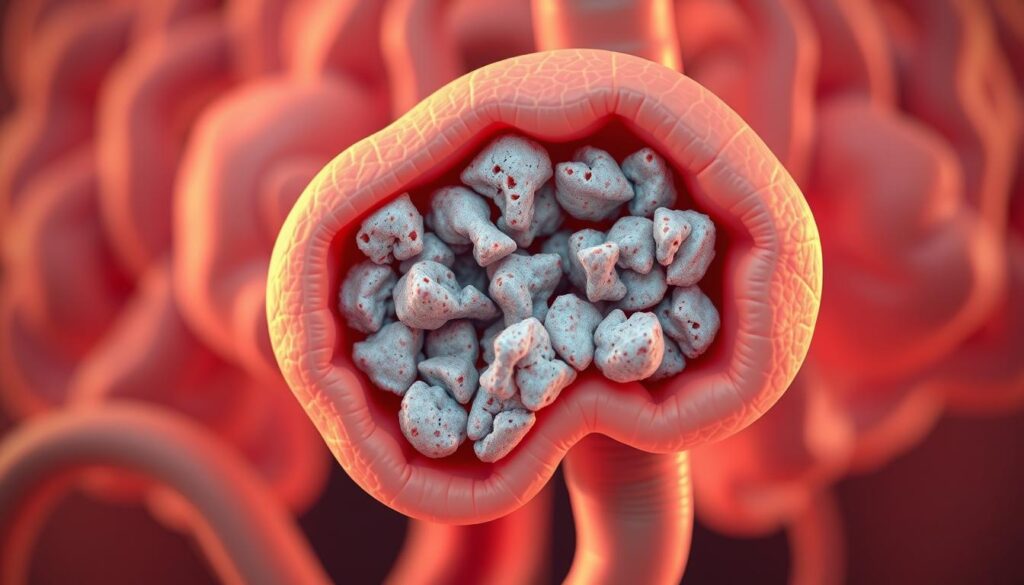
It’s important to know about the causes, symptoms, diagnosis, treatments, and prevention. We’ll cover all these to give you a full picture of this issue.
Key Takeaways
- Prostate gland calcification is a common condition in middle-aged men.
- It is generally considered benign but can lead to complications if left untreated.
- Understanding the causes and symptoms is crucial for early detection.
- Proper management and treatment can prevent complications and maintain prostate health.
- Awareness and preventive measures can significantly impact the quality of life for men affected by this condition.
Understanding Prostate Gland Calcification
Middle-aged men have a health concern with prostate calcification. Prostate gland calcification is when calcium deposits or stones form in the prostate gland.
What Is Prostate Gland Calcification?
Prostate gland calcification is when small stones or calcifications form in the prostate gland. It’s common and usually not serious. However, if it is not treated, it may result in problems like prostatitis. Untreated, it can significantly affect men’s health.
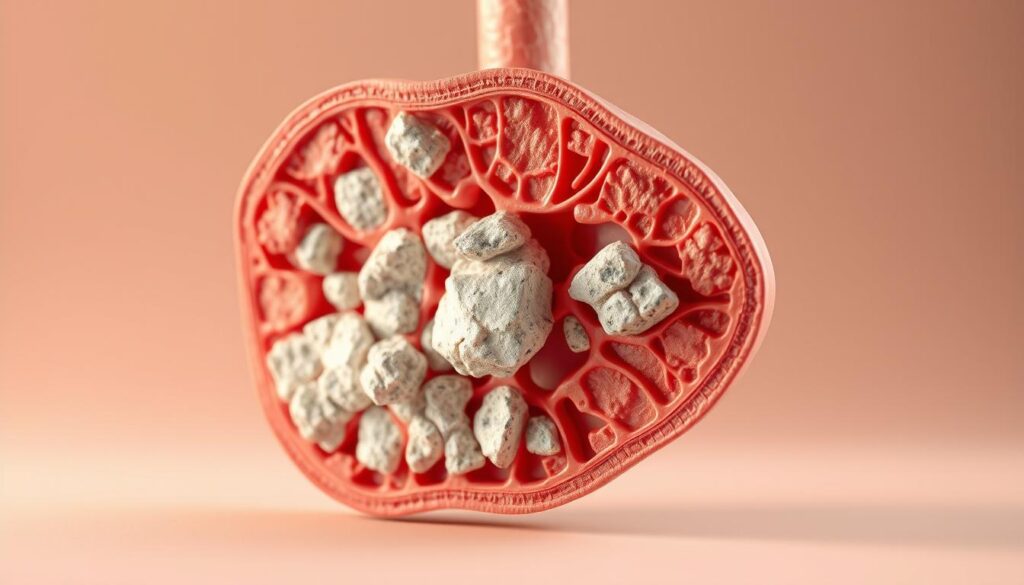
Who Is at Risk?
Some groups are more at risk for prostate gland calcification. Men in their middle age and older are more likely to get it. Those with a history of urinary tract infections or chronic prostatitis are also at higher risk. Lifestyle and certain conditions that cause inflammation can also play a part.
| Risk Factors | Description |
|---|---|
| Age | Middle-aged and older men are more likely to develop prostate calcification. |
| Medical Conditions | Recurrent urinary tract infections and chronic prostatitis increase the risk. |
| Lifestyle Factors | Dietary habits, hydration levels, and physical activity patterns may also play a role. |
Causes and Risk Factors
Several factors can lead to prostate gland calcification. Knowing these causes is key to managing the condition well.
Common Causes
Prostatic calcification often comes from prostatitis, an inflammation of the prostate gland. It can also be caused by benign prostatic hyperplasia (BPH), where the prostate gland grows too big. Prostate calcification might also happen after surgeries or radiation for cancer.
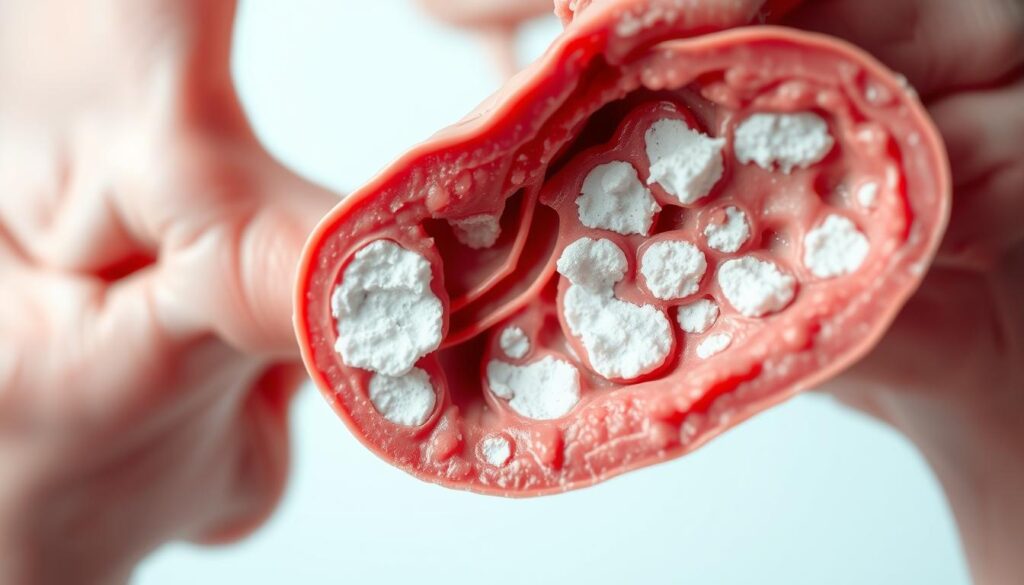
Associated Conditions
Many conditions are linked to prostate gland calcification. Chronic prostatitis can make calcification worse or vice versa. Benign prostatic hyperplasia (BPH) can also lead to stone formation. There’s a possible link between prostate calcification and prostate cancer, but having calcifications doesn’t mean you have cancer.
Symptoms and Diagnosis
To find prostate gland calcification, doctors first check symptoms. Then, they use specific tests for a diagnosis.
Common Symptoms
Prostate gland calcification can cause pain when you pee, needing to pee a lot, and feeling uncomfortable in your pelvic area. These symptoms can be like those of other prostate problems. So, getting a proper diagnosis is very important.
Diagnostic Methods
To find calcifications in the prostate, doctors use several methods. They might do a transrectal ultrasound, X-rays, CT scans, or a prostate biopsy. They also conduct a digital rectal examination (DRE) to find the prostate gland.
They might also do tests like urinalysis, prostate-specific antigen (PSA) testing, and bacterial cultures. These tests help rule out infections or other problems.
Treatment Options for Prostate Gland Calcification
Treating prostate gland calcification can involve different approaches. This includes medical treatments and surgery. The decision is based on your overall health, the severity of your symptoms, the size and location of the calcifications, and how bad they are.
Medical Treatment Approaches
For many, the first step is medical therapy. This aims to ease symptoms and fix the underlying cause.
Antibiotic Therapy
If an infection is thought to be causing the problem, antibiotics are given. Effective antibiotic therapy can lessen symptoms.
Anti-inflammatory Medications
These medications help reduce inflammation and pain. They can make life better for patients.
Surgical Interventions
If medical treatments don’t work, surgery might be needed. Surgery is often for those with big problems or big calcifications.
Minimally Invasive Procedures
Minimally invasive procedures offer a less intrusive alternative for treating prostate gland calcification. These procedures are less invasive. They aim to reduce recovery time and avoid complications.
Transurethral Resection of the Prostate (TURP)
For serious issues, Transurethral Resection of the Prostate (TURP) is used. Through the urethra, a surgeon removes a portion of the prostate. You might stay in the hospital a bit, and a catheter helps with urination at first. Many see big improvements in their pee function after.
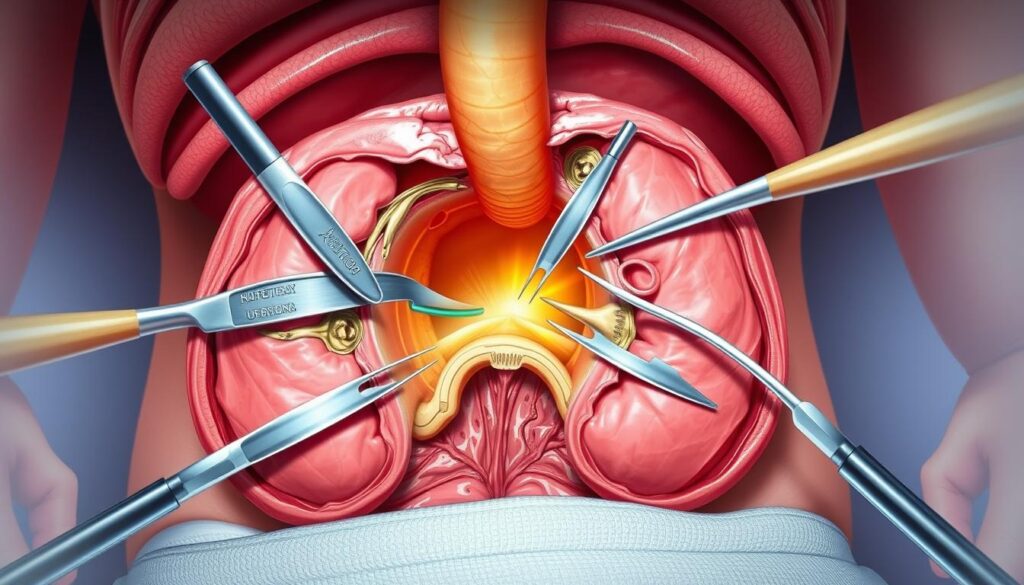
Prevention and Lifestyle Recommendations
Living a healthy lifestyle can help prevent prostate gland calcification. Making smart choices about what we eat and how much we move can lower the risk.
Dietary Considerations
Eating a diet full of fruits, veggies, and whole grains is good for your health. It might also lower the risk of prostate problems. Omega-3 and antioxidant-rich foods are especially beneficial.
Physical Activity and Hydration
Being active and drinking enough water are key to a healthy lifestyle. They help prevent prostate gland calcification. Daily habits such as walking or yoga can improve blood flow. Drinking water removes toxins, keeping prostate healthy.
| Lifestyle Change | Benefit |
|---|---|
| Regular Exercise | Improves blood flow to the prostate |
| Adequate Hydration | Aids in toxin elimination |
| Balanced Diet | Supports overall prostate health |
Conclusion
Prostate calcification is often not serious but needs attention to avoid problems. We’ve talked about what causes it, its symptoms, and treatment options. It’s key for men, especially those at higher risk, to get regular health check-ups for early detection.
Seeing a doctor right away if symptoms show up can lead to good treatment and health. Knowing about prostate calcification and acting early can help men live well.
FAQ
What are the symptoms of prostate calcification?
Pain or discomfort in the pelvic area, trouble urinating, or pain during ejaculation are signs. Sometimes, there are no symptoms at all.
How is prostate calcification diagnosed?
Doctors use ultrasound or imaging tests to find calcification. A physical exam and medical history help rule out other issues.
Can prostate calcification lead to complications?
Yes, if not treated, it can cause chronic prostatitis, infections, or other issues. We should see a doctor if symptoms don’t go away.
What are the treatment options for prostate calcification?
Treatment might include antibiotics for infections, pain relief, or surgery to remove stones.
Can lifestyle changes help manage prostate calcification?
Yes, eating well, drinking plenty of water, and exercising regularly can help symptoms and overall health.
Is prostate calcification a risk factor for cancer?
Prostate calcification itself doesn’t cause cancer but might raise the risk of some conditions. We should talk to our doctor about our risk.
How can we prevent prostate calcification?
Good hygiene, staying hydrated, and managing health issues can lower the risk of prostate calcification.
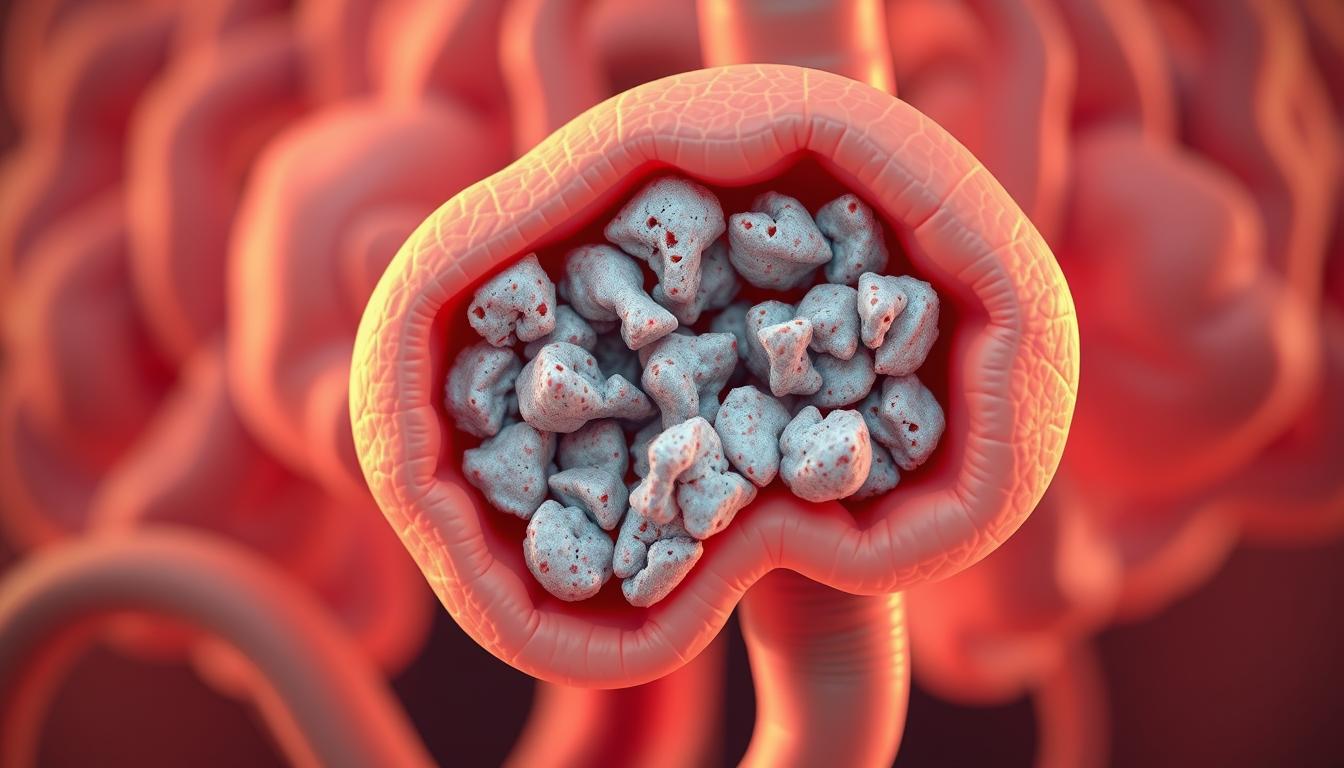


Post Comment